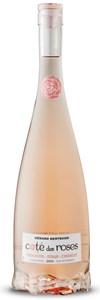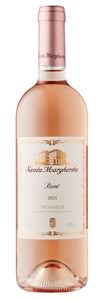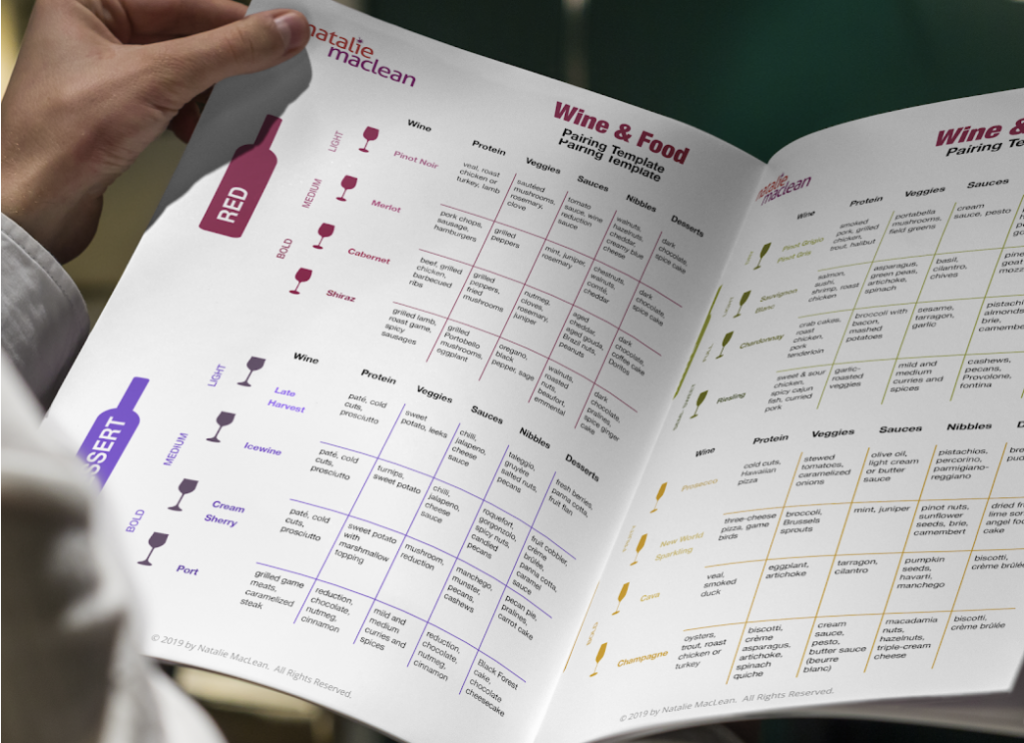Is there any happier sign of spring than Rosé in your glass?
Here to tell us which ones we should try, is Natalie MacLean who offers Canada’s most popular online wine pairing classes at nataliemaclean.com.
Welcome back, Natalie.
Great to be back with you, Meredith!
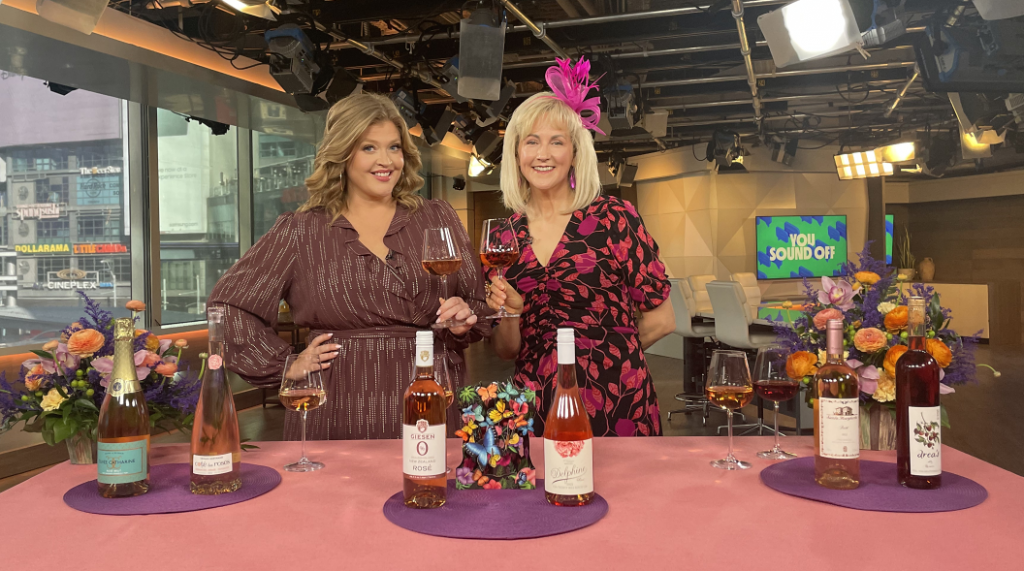
Okay, on to Rosé! Why is it exploding in popularity?
Rosé is packed with flavour and food versatility but not the heavy oak or alcohol of big red wines or even in some whites that have you falling asleep on the sofa at 7 pm. It’s time to lighten up our spring wine wardrobe.
And dare I say, Rosé is also the ultimate breakfast wine. It pairs beautifully with granola, brioche or bacon.
They’ve also come a long way, baby, since the pink syrup we may remember from the 90s and early aughts if we still have any memories of those days—maybe too much Rosé has gone under the bridge since then 😉
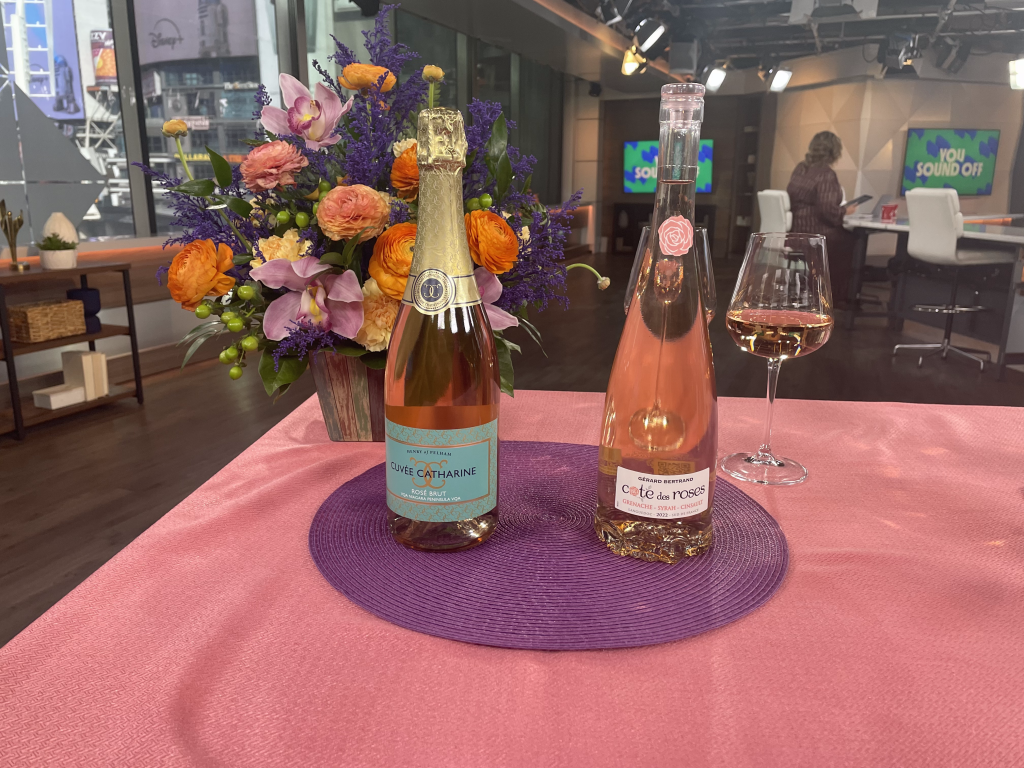
Great! Let’s go to your first Rosé.
We’re starting with the lovely Catharine Cuvée Sparkling Rosé from Niagara.
It’s bursting with breezy aromas of sun-dappled wild strawberries in an open field. Take a sip and image this bubbly with fresh lobster in melting butter.
Rosé sparkling wines are the most expensive and rarest of bubblies. They’re difficult to make because they blend Pinot Noir and Chardonnay grapes. The winemaker tries to get that same signature swirl of pink corals year after year.
Yet this Catharine Cuvée is a third of the price of Rosé Champagne, so it’s actually a bargain.
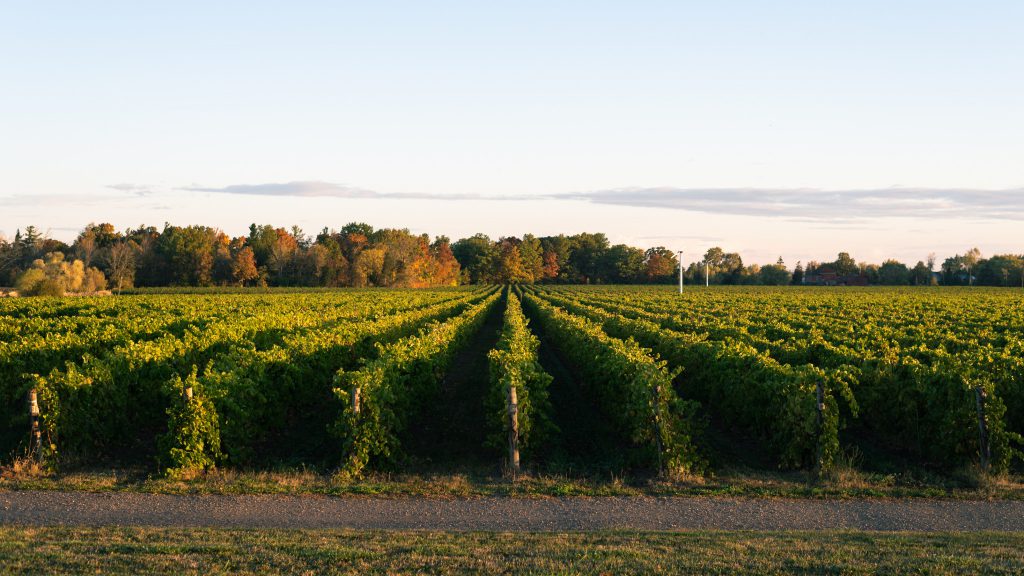
Catharine Cuvée Sparkling Rosé vineyards, Niagara
Henry of Pelham Cuvée Catharine Rosé Brut
Niagara Peninsula, Ontario V.Q.A., Canada
Where are we going next?
We’re flapping our tiny wings and flying over to southern France, the cradle of Rosé, to taste this juicy Côte des Roses Rosé from Gérard Bertrand.
It’s made from Grenache and Syrah grapes, which also make big red wines, but here they’re all elegance with delicate rose petal notes. Go ahead and have a sip. Imagine having this with a steaming garlicky bouillabaisse as you sit beside the turquoise Mediterranean.
Now I know it’s what’s in the bottle that counts the most but look at the gorgeous glass-etched roses on this bottle. Many people keep this bottle even after it’s empty to use it as a decanter or water pitcher with its glass stopper — it’s so elegant.
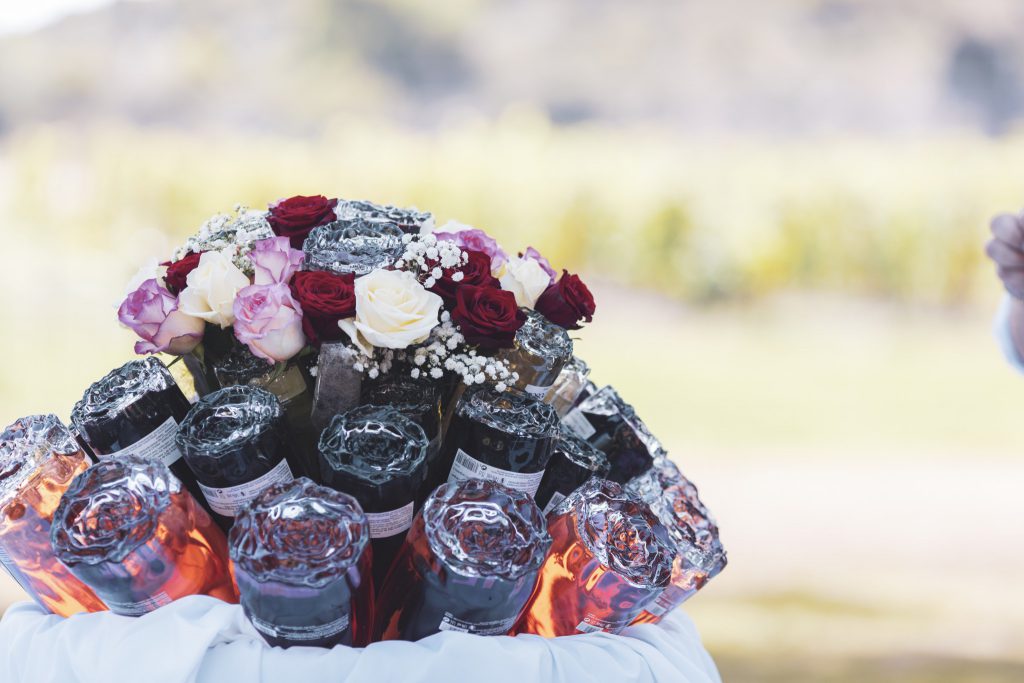
Gérard Bertrand, Languedoc
Gérard Bertrand Côte des Roses Rosé
Languedoc, Midi A.P., France
Let’s move on to this Rosé.
We’re going Down Under to pop up with the Giesen Rosé from New Zealand.
It has juicy notes of watermelon and tiny raspberries. Give it a try.
The bonus is that this wine is alcohol-free so you can’t get much lighter than that for spring. And it also only has nineteen calories per glass. Yes please!
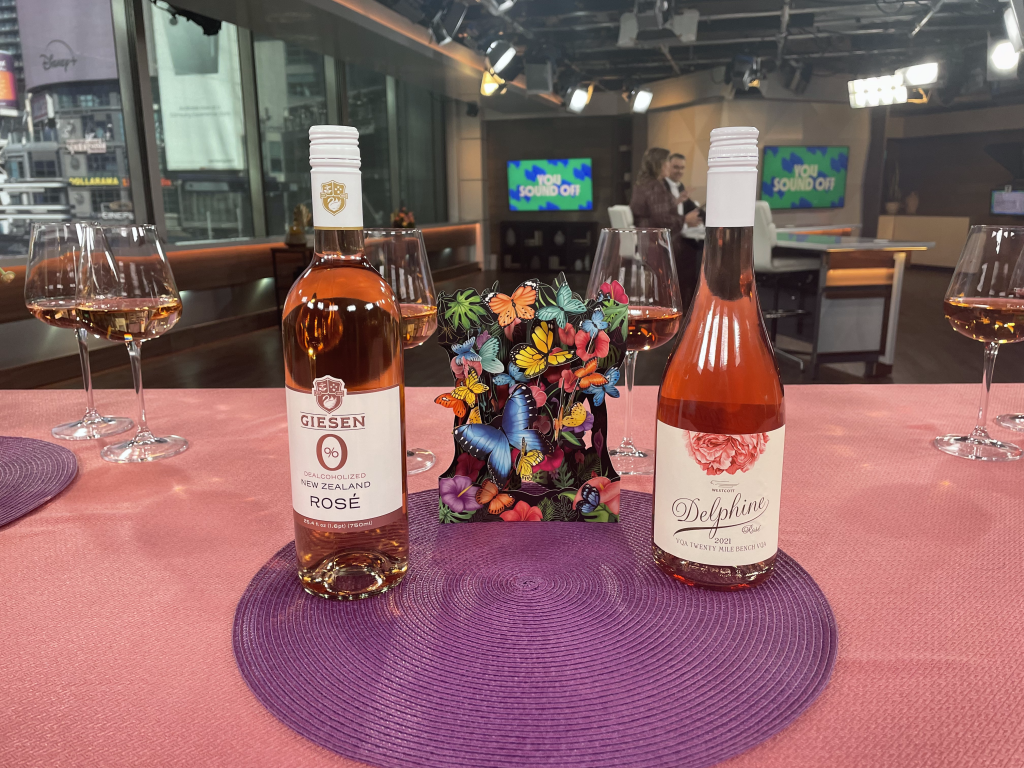
Alcohol-free wines are now so well-made that I don’t think we need to talk about them as a separate category anymore.
When we think about buying wine, we should embrace buying those both with and without alcohol, rather than segregating them.
We should always have them on hand for entertaining and for pacing our own consumption. This wine is available exclusively from psalcoholfree.com and they’ll ship to your doorstep.
You’ll find that great Rosés often come from cool climates like New Zealand and Canada because the grapes don’t over-ripen so they keep their nervy edge of acidity. Acidity is to wine as salt is to food.
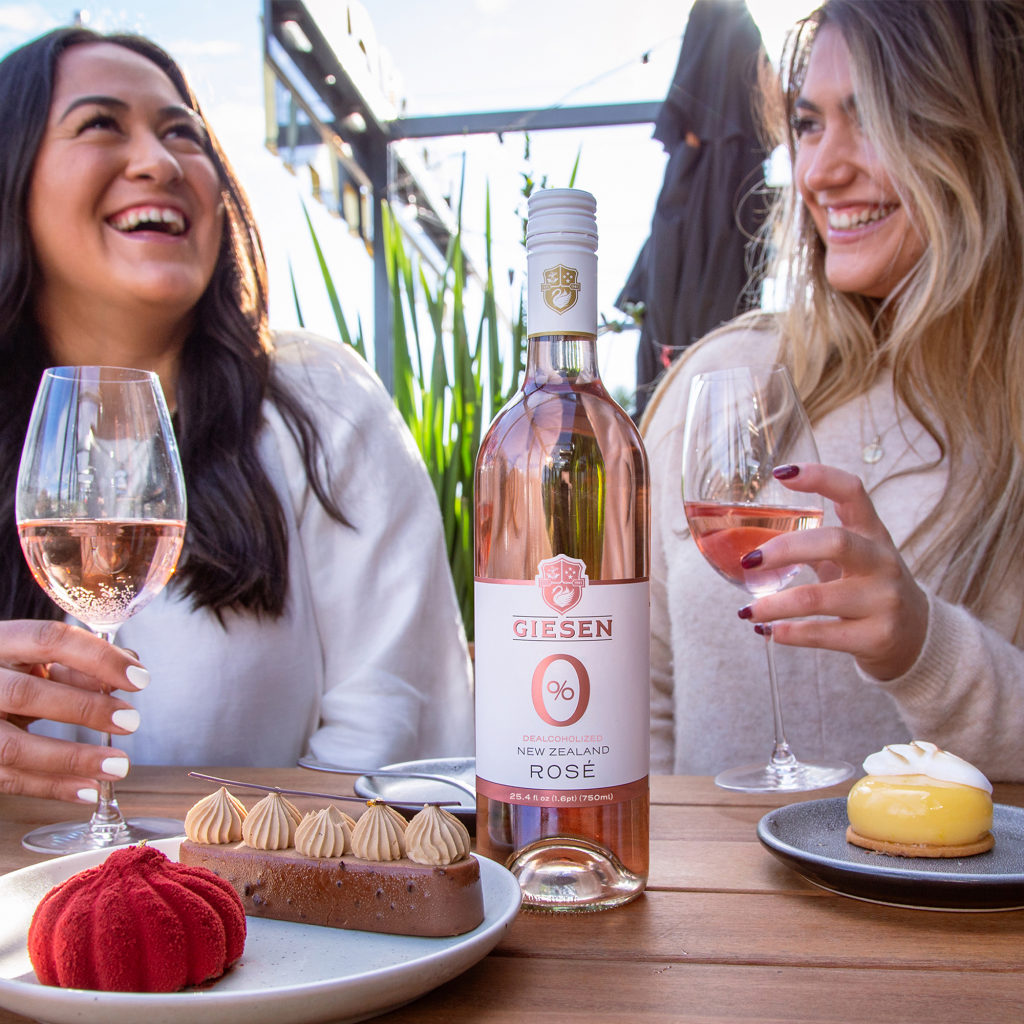
Giesen Wines, New Zealand
Giesen 0% Rosé
New Zealand
What’s next?
We have the gorgeous Delphine Rosé from Westcott Vineyards in Niagara made from Cabernet Franc grapes grown on 40-year-vines. Give it a try.
The old vines concentrate the flavour of the wine to give it beautiful notes of red currants and cherries.
This would be spectacular with mildly spiced curry dishes, or even rosemary roasted quail on a tender bed of wild mushroom risotto.
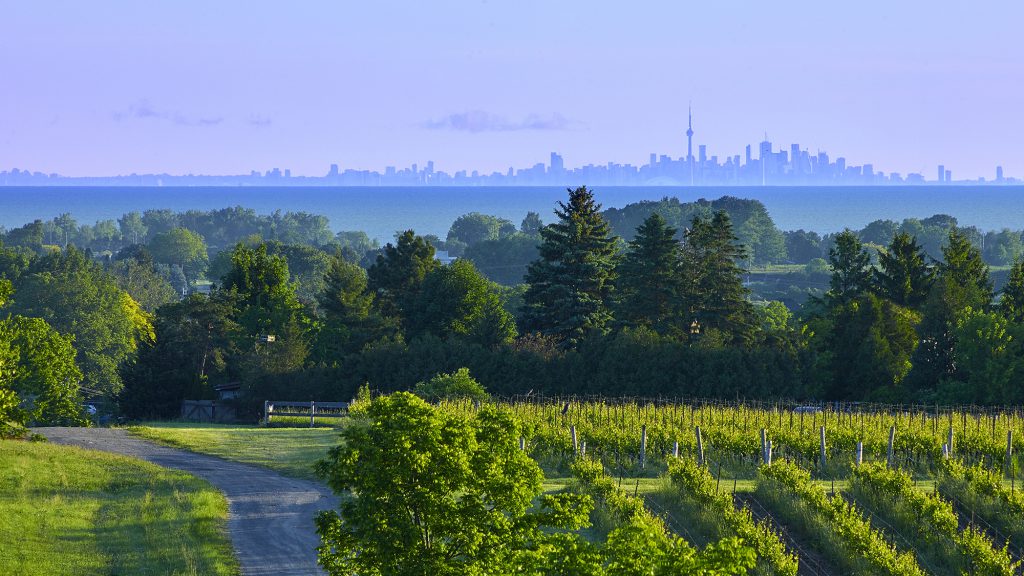
Westcott Vineyards, Niagara
Westcott Vineyards Delphine Rosé
Vinemount Ridge, Niagara Peninsula, Ontario V.Q.A., Canada
Tell us about the Italian Rosé you have for us.
Santa Margherita Rosé is made from Chardonnay and Pinot Nero, the Italian Pinot Noir grape. Try it if you wish.
It looks like a Venetian sunset in a glass and has aromas of perfumed red berries. I’d pair this with some spicy chorizo sausage, hard cheeses and an equally robust, raven-haired Italian man … to brush up on my Italian.
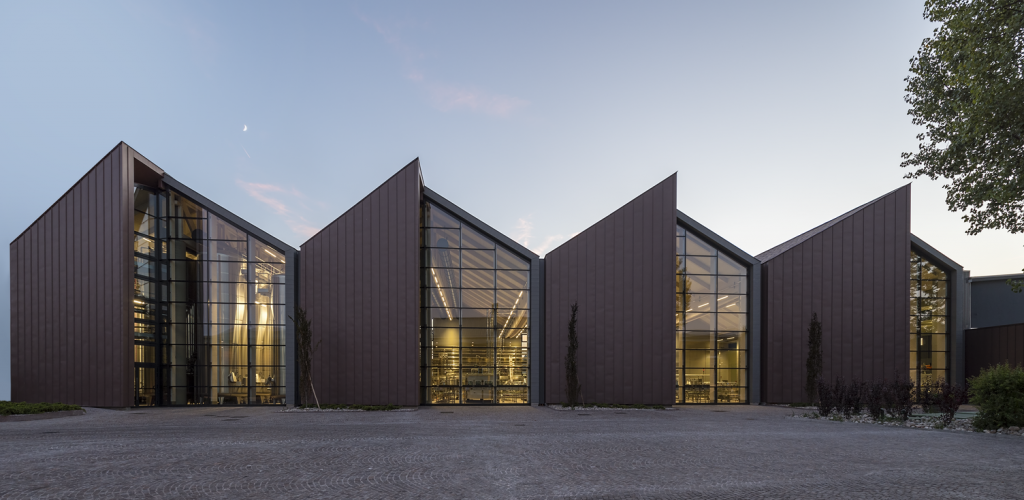
Santa Margherita, Italy
Santa Margherita Rosé
Trevenezie, Veneto I.G.T., Italy
Can you age Rosé?
Rosé is not a cellarable wine. It’s only going to last a couple of years past the vintage date.
You should drink Rosé young – I mean the wine not the person since Rosé can be enjoyed equally by all adults 😉
You also serve it chilled as it’s the drink of refreshment.
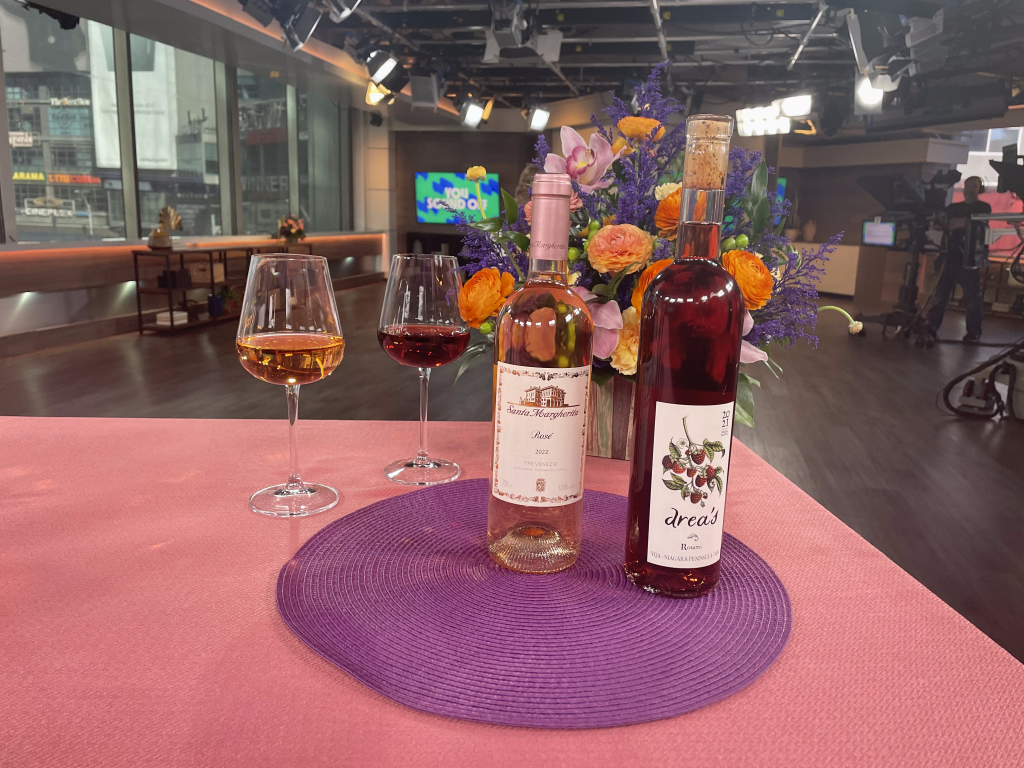
Tell us about your final Rosé.
We’re returning home to Niagara with the Drea Rosé.
Winery owner Andrea Kaiser made this from the red Dornfelder grape, traditionally grown in Austria, in honour of her late father Karl Kaiser, a pioneer in Canadian winemaking who emigrated from the country.
His pet name for her was Drea. This wine has won multiple international awards. Try it.
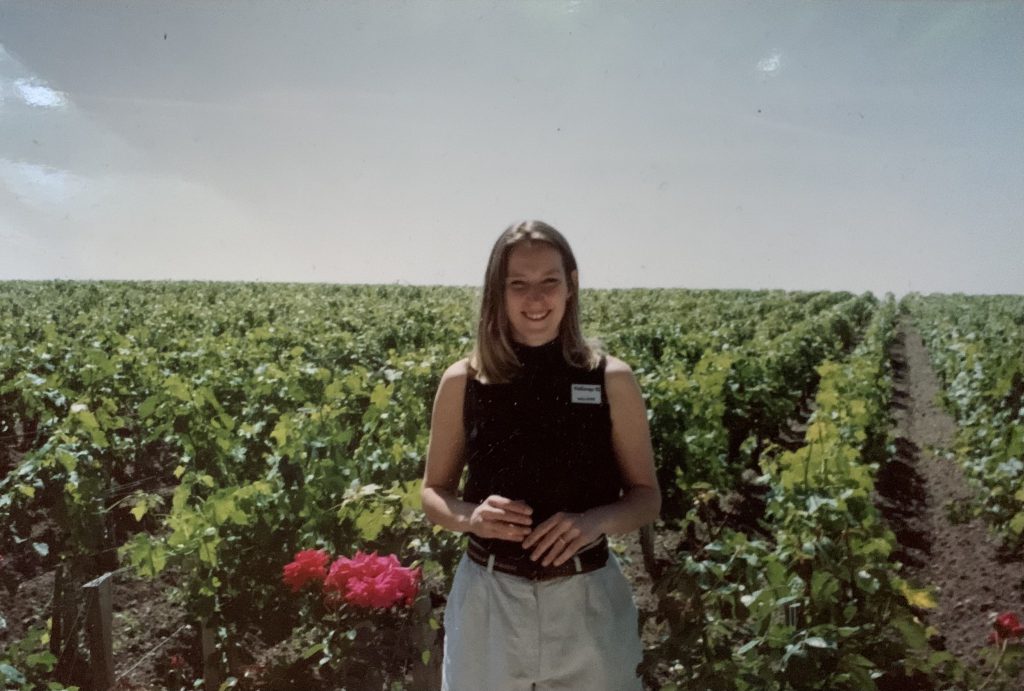
Drea’s Wine Co., Niagara
Drea’s Wine Co. Drea’s Rosé 2020
Niagara Peninsula, Ontario V.Q.A., Canada
Why is it a darker colour?
This darker-skinned grape gives this Rosé a darker hue and deeper flavours.
However, a darker colour Rosé doesn’t necessarily mean higher alcohol. Some of the palest Rosés, with hues of onion skin and ballet slipper, can be far more robust (they call them pink pain). This one though has only 12.5% alcohol.
There’s a reason why you’re number one in this business, Natalie! Thank you so much for coming.
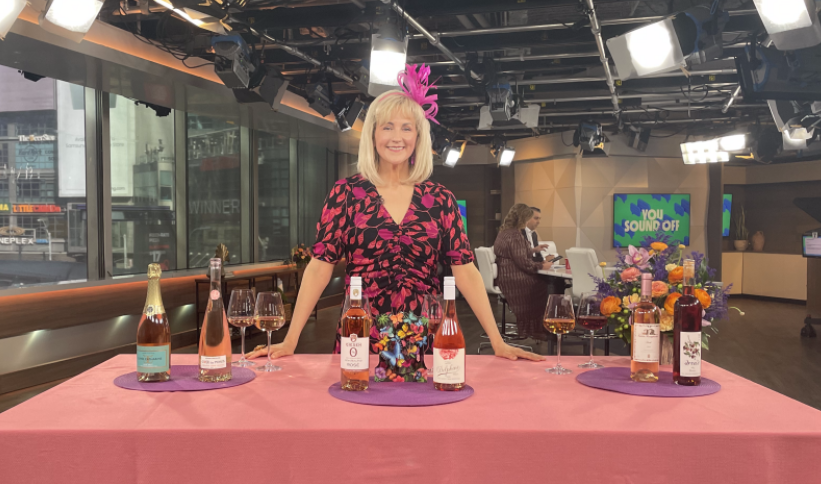
Where can we find you and these wines?
You can find me at NatalieMacLean.com or @NatalieMacLeanWine on Instagram. I’ve listed all of the wines and pairings that we talked about today. Cheers to you, Meredith!
You can get my free Ultimate Food and Wine Pairing guide here: nataliemaclean.com/guide



